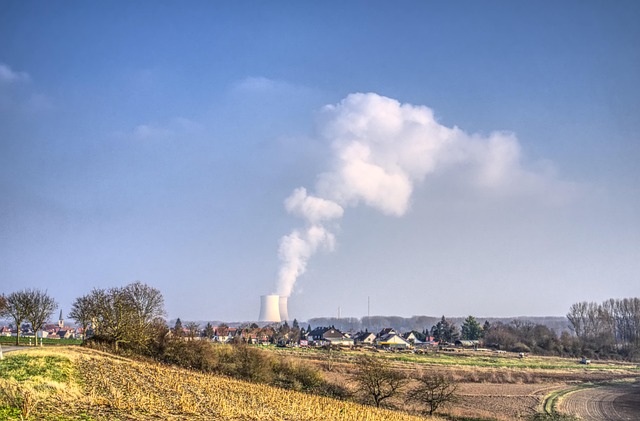
Fission Reactors
Nuclear fission reactors are complex systems that harness the energy released during the fission process to generate electricity. This technology has been pivotal in the development of nuclear power as a significant energy source worldwide. Understanding the principles of fission, the components of a reactor, and the operational mechanisms is essential for comprehending how these systems function and their implications for energy production.
Understanding Nuclear Fission
Nuclear fission occurs when the nucleus of an atom, typically uranium-235 or plutonium-239, splits into two or more smaller nuclei, along with the release of energy and neutrons. This process can initiate a chain reaction, where the emitted neutrons can further induce fission in nearby nuclei, leading to a sustained release of energy. The energy produced during fission is primarily in the form of heat, which is utilized to generate steam and drive turbines for electricity production.
Components of a Fission Reactor
A fission reactor comprises several key components that work in unison to facilitate the fission process and manage the resulting energy. These components include:
- Fuel Rods: These are cylindrical tubes containing nuclear fuel, usually enriched uranium or plutonium. The fuel undergoes fission, releasing energy.
- Control Rods: Made from materials that absorb neutrons, such as boron or cadmium, control rods are inserted or withdrawn from the reactor core to regulate the fission reaction and maintain a stable output of energy.
- Moderator: A substance, often water or graphite, that slows down the neutrons produced during fission, increasing the likelihood of further fission events.
- Coolant: A fluid, typically water, that removes heat from the reactor core and transfers it to a steam generator or directly to turbines.
- Containment Structure: A robust structure designed to contain radiation and prevent the release of radioactive materials into the environment in the event of an accident.
Types of Fission Reactors
There are several types of fission reactors, each designed with specific characteristics and operational principles. The most common types include:
- Pressurized Water Reactors (PWR): In PWRs, water is kept under high pressure to prevent it from boiling. The heated water transfers its energy to a secondary loop, where steam is generated to drive turbines.
- Boiling Water Reactors (BWR): BWRs allow water to boil directly in the reactor core, producing steam that drives the turbines. This design simplifies the system but requires careful management of steam and water flow.
- Heavy Water Reactors: Utilizing heavy water (deuterium oxide) as a moderator, these reactors can use natural uranium as fuel, making them advantageous in certain contexts.
- Gas-Cooled Reactors: These reactors use gas, typically carbon dioxide or helium, as a coolant and moderator. They operate at higher temperatures, which can improve thermal efficiency.
Operational Mechanisms
The operation of a fission reactor involves a carefully controlled process to ensure safety and efficiency. The following steps outline the basic operational mechanisms:
- Initiation of Fission: Neutrons collide with the nuclei of the fuel atoms, causing them to split and release energy.
- Heat Generation: The energy released during fission heats the reactor core, raising the temperature of the coolant.
- Steam Production: The heated coolant is used to produce steam in a secondary loop or directly in the reactor, depending on the reactor type.
- Electricity Generation: The steam drives turbines connected to generators, converting thermal energy into electrical energy.
- Regulation of Reaction: Control rods are adjusted to manage the rate of fission, ensuring a stable output of energy and preventing overheating.
Challenges and Benefits of Fission Reactors
While fission reactors provide a significant source of energy, they also present various challenges and benefits:
Benefits
- Low Greenhouse Gas Emissions: Nuclear power generation produces minimal greenhouse gas emissions compared to fossil fuels, contributing to climate change mitigation efforts.
- High Energy Density: A small amount of nuclear fuel can produce a large amount of energy, making it a highly efficient energy source.
- Reliability: Nuclear power plants can operate continuously for long periods, providing a stable and reliable energy supply.
Challenges
- Radioactive Waste: The disposal and management of radioactive waste generated by fission reactors remain a significant challenge, requiring long-term solutions.
- Safety Concerns: Accidents, although rare, can have severe consequences, necessitating stringent safety measures and regulations.
- Public Perception: The association of nuclear power with disasters can lead to public opposition, impacting policy and investment in nuclear technology.
Conclusion
Fission reactors play a crucial role in the global energy landscape, offering a powerful means of electricity generation with distinct advantages and challenges. As technology advances and safety measures improve, the potential for nuclear power to contribute to a sustainable energy future remains significant. Understanding the principles and operations of fission reactors is essential for informed discussions about energy policy and environmental impact.

















 Silicosis in Pottery
Silicosis in Pottery 
 Health
Health  Fitness
Fitness  Lifestyle
Lifestyle  Tech
Tech  Travel
Travel  Food
Food  Education
Education  Parenting
Parenting  Career & Work
Career & Work  Hobbies
Hobbies  Wellness
Wellness  Beauty
Beauty  Cars
Cars  Art
Art  Science
Science  Culture
Culture  Books
Books  Music
Music  Movies
Movies  Gaming
Gaming  Sports
Sports  Nature
Nature  Home & Garden
Home & Garden  Business & Finance
Business & Finance  Relationships
Relationships  Pets
Pets  Shopping
Shopping  Mindset & Inspiration
Mindset & Inspiration  Environment
Environment  Gadgets
Gadgets  Politics
Politics 